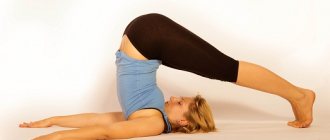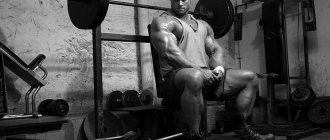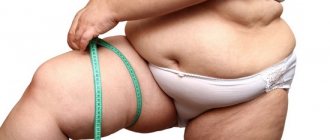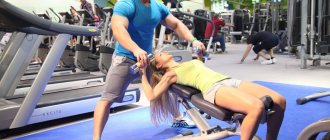Power training
Body Combat or Body Training is a type of strength training aimed at strengthening all major muscle groups.
Strength training is the fastest and most effective way to make your body sculpted and toned. Strength training is very diverse and suitable for almost everyone.
Body Combat or Body Training strengthens all major muscle groups, makes the human body fit and beautiful, develops muscular endurance, strengthens the cardiovascular system, and has a positive effect on the musculoskeletal system.
Such loads are suitable for well-physically trained people - with an average and high level of training: to relieve nervous tension and combat chronic fatigue syndrome, to prevent the consequences of a lack of movement by increasing the tone and strength of the muscles of the arms, legs, abdominals, back and strengthening the ligamentous apparatus for postural disorders, to normalize joint mobility.
Contraindications:
all general
*
, as well as decreased visual acuity.
Dance (classical) aerobics
Dance (classical) aerobics is a type of training in which various dance and basic aerobics steps are performed non-stop.
This type of program is an ideal way to lose extra calories.
Classic aerobics trains the cardiovascular system, develops cardio endurance, has a positive effect on the musculoskeletal system, promotes fat burning and gives you energy for the whole day!
Aerobics is great for strengthening all muscle groups, increasing the overall endurance of the body, improving the functioning of the cardiovascular and respiratory systems, and is suitable not only for healthy people, but also for those with excess body weight and poor posture.
Contraindications:
all general, as well as severe arthrosis of the joints of the lower extremities and flat feet, angina pectoris, second and third degree hypertension, heart failure, varicose veins of the lower extremities.
Step aerobics
Step aerobics is a type of training in which various dance and basic aerobics steps are performed non-stop using a special step platform.
The step platform increases the intensity of the workout, because... During the lesson, steps are performed with entry, both onto the platform and around it.
Step aerobics gives everything the same as classical aerobics, also providing the prevention of injuries to the knee joint, but only with the correct technique!
An excellent type of physical training, suitable for people of any fitness level. Recommended for healthy people - to prevent the consequences of lack of movement (hypodynamia and hypokinesia), strengthen the main muscle groups, improve the functioning of the cardiovascular and respiratory systems. Indicated for overweight, obesity degrees 1-2.
Contraindications
: all general, as well as severe osteochondrosis of the lumbar spine with radicular syndrome, spinal hernia, decompensated venous pathology of the lower extremities, cardiac arrhythmia, severe flat feet.
Tai-bo
Tai-bo is a type of aerobic training using elements of martial arts and martial arts.
Tai-bo is an ideal way to get rid of negativity, charge with positive emotions and a quick way to lose weight.
Tai-bo gives a slim and strong body, strong muscles of the arms, legs and abdomen, good physical fitness, high muscle endurance, develops agility, and teaches self-defense.
Another type of aerobic strength exercise, suitable for healthy trained people, 1 hour of which approximately corresponds to the effect of a 10-kilometer run. Indicated exclusively for practically healthy people to increase the adaptive capabilities of the cardiovascular system, increase muscle tone, control body weight, and for the musculoskeletal system - increase flexibility, strength, improve reaction, coordination.
Contraindications:
all general, as well as decreased visual acuity.
Who is stretching recommended for?
Stretching is a universal workout that suits everyone: there are no age restrictions or required level of physical fitness. This type of fitness is most useful for:
- people with low physical fitness: if you are new to the gym and have just started lifting, stretching will be very useful for you - it will make your joints more mobile and prepare your muscles for intense training;
- people with a sedentary lifestyle: this is an ideal workout to get rid of the stress of a sedentary lifestyle;
- older people: to keep your muscles toned, you need to do stretching at any age;
- after injuries: stretching is very useful for those who, due to injury/illness, cannot return to intense training in the gym;
- for men: there is a misconception among men that in order to get pumped up, you only need strength exercises. With regular stretching, the fascia - the shell of your muscle will become more flexible, so it will become easier for you to work on relief and gain muscle mass.
This sport also has some contraindications. You can’t do stretching if you have:
- serious spinal injury;
- complex fractures of the limbs;
- disease of bones and ligaments;
- osteochondrosis.
Cycling (or spinning)
Cycling (or spinning) is a type of exercise bike program.
Energetic music and good company of cyclists are the best way to get rid of extra pounds!
Cycling gives: cardiovascular training, cardio endurance, high fat burning, strengthening leg muscles, especially the lower leg, and good spirits.
Cycling training is a unique training that has virtually no specific contraindications (with the exception of general ones), except for pregnancy and venous pathology of the lower extremities. The advantages of this method are that in the absence of a “shock” load on the spine, the abdominal muscles, pelvic floor, and legs are trained, and the activity of the autonomic nervous system is improved. Indicated for cellulite, overweight, obesity of 1-2 degrees, can be used in preparation for a planned pregnancy.
Stretching for increased flexibility
Stretching is a literal translation of the English term, which in Russian means stretching. Often these workouts are considered not only as independent, but also as accompanying short-term workouts before or after the main loads (strength or cardio).
One stretching session consists of both static and dynamic exercises. But all of them are aimed at making your muscles, joints and ligaments more flexible, and improving blood circulation in the tissues. Stretching also helps strengthen the spine and warm up the muscles before strength training. Muscle fibers become more flexible and less susceptible to various sprains and tears.
The peculiarity of stretching is that in this discipline there is no pre-thought-out exercise algorithm. You can train only one muscle group, and the next day another, etc. If you want to do the splits and only that, then your 3-4 exercises for this will also fall under the category of stretching.
Stretching training does not pay much attention to breathing exercises. The general rule for any training applies - breathe measuredly, do not forget to exhale through your mouth and inhale through your nose, maintain a uniform pace, and during jerk exercises, exhale during the jerk.
Stretching also involves practicing exercises in pairs, which is not the case in the fitness disciplines described above.
Who is stretching intended for:
- Overall body flexibility is important to you.
- You want to relax your muscles after cardio or strength training.
- You don't have a lot of time for this kind of training.
Stretching will not suit you in the following cases:
- You already take a yoga class or take a Pilates class.
- You need not only flexibility, but also strength and endurance.
- You want to lose extra pounds and have chosen stretching as your main workout.
Dance classes (jazz, modern, strip, latina, tango, etc.)
All types of dances presented in fitness clubs are universal and can be performed by women of any age and training.
Dancing gives: body plasticity, flexibility, grace, liberation and relaxed behavior in life, good mood (these are incredibly emotional lessons!), development of coordination and dexterity.
They are indicated for almost everyone, excluding those who have severe stages of arthrosis of the joints of the lower extremities, osteochondrosis with radiculopathy, hernias, instability of the cervical vertebrae, impaired coordination of movements (Meniere's disease, dizziness, severe cerebral atherosclerosis), severe flat feet.
Pilates: beauty, strength and flexibility
One of the popular types of fitness in the modern world is Pilates. If you compare it with yoga, it is much simpler and more understandable to everyone. This set of exercises was developed in the twentieth century by Joseph Pilates. Here the main emphasis is usually placed on the development of the abdominal muscles, which is also called the “strength frame”. There is also an emphasis on stretching the spine. Such exercises help prevent poor posture and strengthen the necessary body position.
Breathing is also important here. However, when compared with yoga, we can say that there is not such a large number of breathing exercises. In Pilates, it is common to practice thoracic or lateral breathing, which can strengthen the intercostal muscles.
What yoga and Pilates have in common is concentration during the training process. When doing this type of fitness, it is important to focus on the position of your own body, as well as tension and relaxation of muscles and breathing. Thanks to this feature and the slow implementation of the set of exercises, you can avoid injuries while practicing.
What distinguishes Pilates from yoga is more dynamism in movements. There's also more repetition here. However, there are also statistical exercises, including the plank.
Pilates is suitable for all those who plan regular exercise, as well as those looking for an exercise system that will not only help provide excellent stretching, but even strengthen muscles. This type of fitness will be a good option for those who are not in very good physical shape and are just starting to enter the sports world.
But if you are annoyed by leisurely exercises and have been looking for more active physical activity for a long time, it is better to abandon Pilates and choose something more suitable.
Functional training
Functional training is a type of program in which exercises are performed aimed at developing balance and strengthening the muscular corset at the same time.
A special feature of the training is that the lesson includes exercises and body movements that are typical for us in everyday life (bending, turning, etc.). Due to the wide variety of functional training, this type of training is universal and will appeal to anyone!
Functional training provides: development and strengthening of muscle groups, both the outer muscle layer and the internal layer, development of balance, correct posture, flexibility, strength and endurance, good coordination.
Suitable for people with any level of initial fitness. Because Since this type of physical activity uses imitation of everyday movements, it can be practiced by almost all those who do not have general contraindications and heart arrhythmias or severe hypertension.
Which is better to choose: stretching or Pilates?
And yet there are no fundamental differences between the methods. Both systems are effective and beneficial for health and the development of plasticity. The choice is determined by your goals and personal preferences. What is better: Pilates or stretching, everyone decides for themselves. If you want to stretch your body or focus on specific muscle groups, nothing prevents you from creating a complex of 5-6 techniques from different types of gymnastics. According to statistics, the first method with fixed movements is more often chosen by older people and athletes undergoing rehabilitation. Young women who want to move beautifully in Latin American dances and do the splits like Anastasia Volochkova prefer total stretching. However, none of the slow aerobics will quickly get rid of excess weight. To lose weight, they are done after intense cardio or gym work.
Pilates
Pilates is a type of program aimed at developing correct posture, as well as strengthening the inner layer of muscles.
Its distinctive feature is its absolute versatility and applicability.
Pilates gives: the skill of correct back position and posture, the development of flexibility and mobility of joints, the prevention of joint and spinal injuries and diseases.
Forms a strong muscle corset, develops proper breathing.
The advantages of this method are to strengthen the musculoskeletal system (joints, muscles, ligaments), especially the abdominals, improve coordination of movements, reduce back pain if present, and form a stereotype of proper breathing with minimal load on the spine. Pilates can be used by people of any gender, age, and with minor restrictions (for example, minimal stretching) during normal pregnancy and after childbirth.
Contraindications
- are common.
Characteristic features of stretching
When doing stretching, the main part of the exercises will be aimed at muscle stretching by alternating dynamic and static cycles. The lesson is based on practicing each stretch element and holding the position for 10-30 seconds. At the same time, it is important to concentrate on your sensations, since movements should not cause pain. Individual muscle groups are trained alternately, which allows you to control and work out a specific area as efficiently as possible.
It is unlikely that you will be able to get rid of excess weight through stretching, but it is quite possible to strengthen muscles, develop flexibility, plasticity, improve joint mobility and tighten your figure. The exercises can be done independently at home, the main thing is to do everything smoothly and measuredly. Unlike stretching, it is not recommended to do Pilates on your own, since during the exercises important attention should be paid to breathing control. It is best to have a professional trainer ensure that the technique is correct.
Stretching (stretching)
Stretching is a type of training aimed at developing body flexibility.
This is an ideal way to improve your stretching, relax your muscles after a busy day, or, conversely, prepare your body for productive work in the morning.
Stretching gives: relief from tension in muscle groups and relaxation (almost like a massage!) a feeling of looseness and relaxation in the neck-collar area, back and muscles of the legs and arms, better mobility and, accordingly, amplitude in the joints, increases muscle elasticity, promotes muscle recovery after physical work.
These workouts are aimed at improving stretching, flexibility and relaxation of muscles, mainly in the lower extremities and back. Indicated for “office back” syndrome, osteochondrosis, arthrosis, prevention of the consequences of insufficient movement, to normalize vascular tone.
Stretching is contraindicated
for hernias and spinal instability.
What are the differences and similarities between the directions?
Depending on your goals, everyone decides for themselves what is better: Pilates or stretching. What they have in common:
- static-dynamic muscle tension;
- conscious movements;
- focusing on sensations.
In order to make a choice, you need to find out how Pilates differs. The author of the method emphasized the development of a “framework of strength” - a muscular shell that protects internal organs from displacement and injury. It includes simple yoga asanas such as “plank”, bridge, “cat”, oriental techniques that determine the position of the body and the trajectory of the movement of the hands in space.
Yoga
Yoga is a type of exercise ideal for those who want to become aware of their inner world, develop flexibility, become stronger and develop breathing.
Yoga is a unique class that combines great mental work and concentration with intense muscle and breathing work. Suitable for any age!
Yoga gives: concentration, the ability to listen to yourself and understand your inner world, development of respiratory function and strengthening of the respiratory system, strengthening muscles and developing muscle endurance, a feeling of inner strength and harmony with oneself.
Suitable for people of any age and physical fitness. During the classes, the muscular-ligamentous apparatus is strengthened, the sense of balance and coordination of movements is trained, muscle tone, flexibility, and joint mobility increase, weight is reduced, and the psychological state and well-being are normalized.
Indications for classes: problems with the spine, chronic fatigue syndrome, increased anxiety, sleep disorders, functional disorders of internal organs (for example, “lazy bowels”).
Yoga is not only the body, but also the soul
It is a mistake to believe that yoga is only about training in the gym. Real yoga is a whole philosophy that provides for spiritual, mental and physical balance. Only a physically healthy person can be psychologically healthy, and vice versa. Only those who live in harmony with themselves, their thoughts and body can be truly happy.
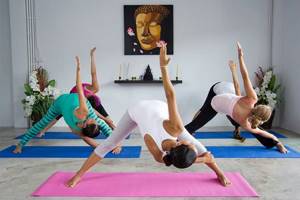
The history of yoga is not known for certain. Researchers have still not been able to establish when this philosophy first appeared. Yoga was first remembered in the Rigveda - this is an ancient Indian treatise (a collection of solemn songs and hymns). Yoga has become so popular all over the world and can rightfully be considered a national treasure of India.
But we are interested in the fitness component of yoga. Even if you are not into spiritual practices and meditation, doing yoga only from a physical point of view will also be beneficial. Body training consists of two parts - the practice of various poses (asanas) and breathing exercises.
An asana in yoga is a fixed body position that must be maintained for one minute. Each asana has its own name and detailed requirements for execution technique. If a yogi performs the asana correctly, the spine smoothly stretches, creases and strains in the neck go away, and the load is evenly distributed throughout the body.
In this case, if you perform asanas correctly, you will get rid of nervous tension, pinched nerves, strengthen the overall tone of the body and even get rid of some diseases of the internal organs.
Yoga asanas are useful because they include those muscle groups that we use only occasionally in everyday life and even during strength training. These muscle groups quickly wither and lose tone. A set of yoga asanas is aimed at uniformly distributing the load throughout the body, and special attention is paid to the so-called passive muscle groups, which in ordinary life do not receive sufficient load.

Yoga also helps fight so-called muscle tension. They occur if you spend a long time in a position that is unnatural for the body. A standard workday at the office also falls into this category - no matter how comfortable your desk chair is, you are often hunched over and trying to read the text on the monitor screen. This body position can hardly be called natural for the body.
A properly structured yoga workout can not only evenly load the entire body, but also include exclusively those muscle groups that the asana targets. Yoga poses are designed in such a way that the remaining muscles are completely relaxed and are in a state of relaxation and rest. But this is only true if you do the exercises correctly.
Some asanas can improve the condition of internal organs, relieve pain and improve blood supply to damaged tissues. Impact on “energy points” while performing asanas improves the general condition of the body and helps to recover faster from illness or stress. Experts and yoga lovers say that after a morning workout and asanas, it is much easier to concentrate on work and cheer up.
To summarize, yoga classes are suitable for you in the following cases:
- You are looking for more than just stretching or physical activity in your training - you want to relax mentally, develop spiritually and forget about stress. If you strive for harmony in everything, yoga will help.
- You have problems with your back or spine. Asanas will relieve pain and improve your general condition. For medical reasons, it is better for you to consult your doctor.
- You feel muscle tension, sudden muscle pain.
- You have a stressful job, you are under constant tension.
- You want to change the load and better feel every muscle in your body.
- You are interested in developing your sense of balance and vestibular apparatus.

At the same time, yoga also has its contraindications:
- Medical restrictions on performing all or several asanas.
- You want to lose extra pounds and have chosen yoga because fewer calories are burned during asanas.
- You perceive yoga only as a workout “after strength training” in order to relax and stretch your muscles.
- You don't want to spend money on a trainer and watch video lessons. Improper execution of asanas will not only bring no benefit, but will also cause harm! Yes, you will get up early in the morning and improve your self-discipline, but your body won't thank you. You will lose the main benefit of yoga - achieving physical, mental and mental balance. The trainer will set the load level correctly - you will develop endurance, but at the same time you will not overexert yourself.
*General contraindications
For a number of diseases and conditions, physical education and sports are temporarily prohibited. Such diseases, for example, should include: general serious condition, disturbances of consciousness; mental disorders; all acute illnesses accompanied by an increase in body temperature above 37°C, as well as the recovery period until complete restoration of health; any diseases of internal organs and body systems in the phase of exacerbation or decompensation - organic and functional diseases of the cardiovascular system with compensation disorders (uncompensated defects; paroxysmal tachycardia; atrial fibrillation; aortic aneurysm, myocardial dystrophy); organic and functional diseases of the nervous system, accompanied by significant impairment of its functions; respiratory diseases, accompanied by respiratory failure, loss of body weight, circulatory disorders, etc.; cholelithiasis, viral hepatitis, liver cirrhosis; conditions accompanied by the risk of bleeding, for example, blood clotting disorders, pulmonary tuberculosis, traumatic injuries; acute and chronic purulent processes (furunculosis, phlegmon, otitis, osteomyelitis, etc.); infectious lesions of the musculoskeletal system; neuroinfections; blood diseases; consequences of severe traumatic brain injuries, spinal injuries with unsatisfactory compensation; diseases of the urinary system (pyelonephritis, glomerulonephritis, nephrosis, urolithiasis, etc.); oncological diseases and suspicion of them; menstruation; postoperative period of abdominal operations for 1 month. with its uncomplicated course. Sometimes, for these diseases, physical exercise may be recommended, but only in the form of special therapeutic exercises.
Any type of aerobic program presented above can be accessible to any age, but with some reservations. It is important to correctly select the level of complexity of each program, adequately assess your level of training, analyze your health problems and correlate how useful this or that type of exercise will be specifically in your case and pay great attention to exercise technique.
If all this is done correctly, then any type of program will suit your body and face! Good luck!



